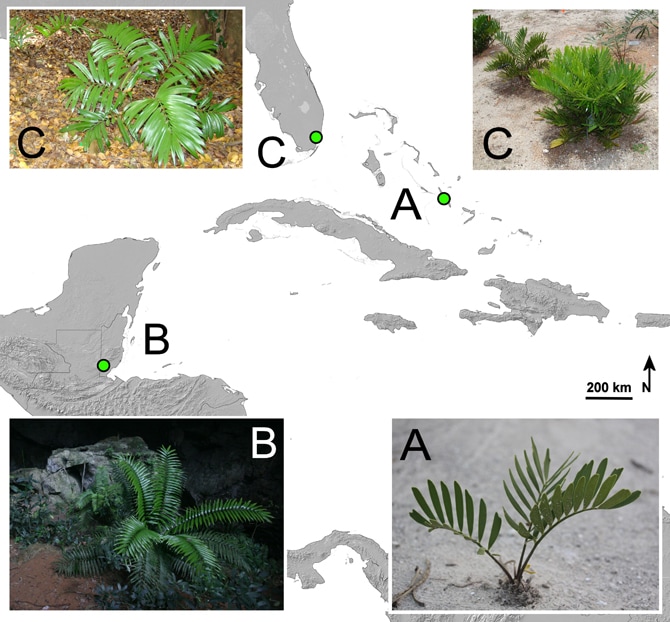New study: botanic garden plants are not equal when it comes to conservation.

A. Zamia cycad in it’s natural Bahamas location
B. Cycad in its natural Belize location
C. Comparison specimens from the Montgomery Collections
A new scientific study shows how two closely related species can differ in conservation effectiveness, when grown in a garden. The paper, appearing in BIODIVERSITY AND CONSERVATION, shows that different strategies are needed for different plants, based on biology or geography.
The new paper, supported by a major grant from the Institute of Museum and Library Services, compares two imperiled cycad species from different habitats – sunny beaches and dark rainforest caves – showing that a slower-growing plant may need a larger collection to capture the same amount of genetic diversity as a faster-growing plant.
Plants grown in botanic gardens help to conserve a growing number of endangered species. Quoting from the paper, “cultivation of imperiled plants perfectly leverages the skills and assets of the botanic garden field to contribute to species survival.” Figuring out exactly the right number of plants to grow can help gardens use those resources most effectively.
The study is an international and broad collaboration among Montgomery, Bahamas National Trust, Belize Botanic Gardens, Botanic Gardens Conservation International, Fairchild, Florida International University, and the USDA Chapman Field Station. 
This project was made possible in part by the Institute of Museum and Library Services [MA-30-14-0123-14]. For more on the IMLS find it on twitter @US_IMLS and www.facebook.com/USIMLS. Thank you IMLS!
